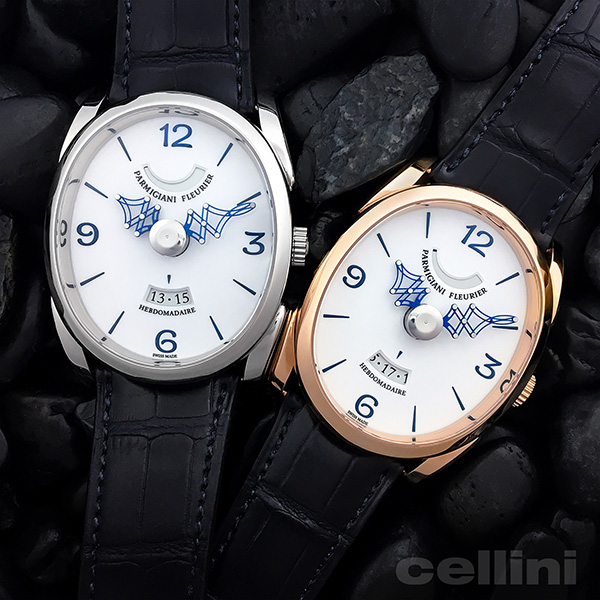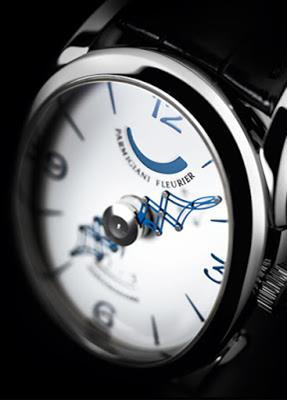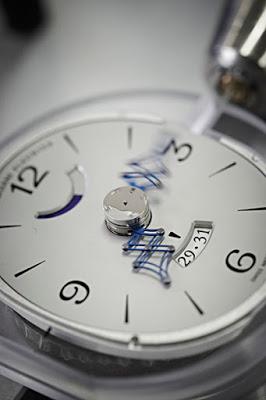
The Ovale Pantographe from Parmigiani Fleurier
The prestigious oval watch with telescopic hands—created by the English jewelers, Vardon and Stedman—is a true marvel of watchmaking, which came into the restoration workshops of the Fleurier-based brand in 1997. This piece really caught the imagination, because of its enchanting elliptical form and the magic of its complication. Its two telescopic hands follow the contours of the case, extending and shortening with the ellipse, skimming the numerals as if to showcase the time. Thanks to this understated complication, known as the pantograph, the piece seems to have a life of its own which explains to us the mysteries of time.
The oval line and the mastery of the prestigious pantograph complication represent two of Parmigiani Fleurier’s trademark characteristics.
The first is the brand’s complete independence, which is ensured by its verticalized production facility. This makes it possible to recreate the components of a genuinely unique grand complication and produce the most original shapes.
The second characteristic is the unbreakable link between Parmigiani Fleurier and restoration. The extraordinary watches produced by our forefathers are a treasure trove of knowledge and expertise, teaching us the importance of fine craftsmanship and representing an inexhaustible source of inspiration for the watches of the present. Just like the oval watch and its modern interpretation, any restoration carried out by Parmigiani Fleurier is an ongoing dialogue between the excellence of the past and the quest for its future watchmaking incarnations.
The Pantograph Complication
The star of the oval collection is without doubt the pantograph complication, whose hands perform a subtle dance to the passage of time. The hands are based on the pantograph, the instrument from which they take their name, and use the same principle of multiplying a length by a given factor to obtain movement on a larger or smaller scale.

The indicator for the eight-day power reserve.
In concrete mechanical terms, a cam at the center of the movement determines a certain length that is then replicated X number of times across the entire hand. In other words, the measurement of this central cam provides the information required to move the hand and adjust it as it pursues its course around the dial.
This trajectory and its elongation have been meticulously calculated so that the hands trace a perfect, harmonious ellipse. A computerized simulation also ensures that the minute hand is never retracted as far as the hour hand, which means, for example, that 12:15 cannot be confused with 3 o’clock.
Confounding expectations, the main challenge posed by this extraordinary piece was not the horological complication itself, but rather the cutting and, in particular, assembly of the telescopic hands. Having explored a number of different techniques, the watchmakers at Parmigiani Fleurier opted for state of the art technology to cut the fine segments of titanium from which the hands are made. They employed the latest generation laser cutting techniques, which use water and nitrogen and guarantee accuracy to the nearest 2 to 4 µm. It took a year of testing at the Lausanne institute of technology to achieve the desired accuracy.

Coming together at the manufacture
This led to the assembly stage, where extreme high-tech equipment gave way to the human hand. In fact, the accuracy of machines, however perfect it may be, can never replace the watchmaker’s eye and dexterity in the crucial stages. Riveting the titanium segments also required excellent hearing and sensitivity of touch. As the rivet is struck, the skill is in identifying the moment at which the rivet is deformed, as indicated by a characteristic “tink” which occurs when the material is altered, signaling the end of the operation. Following this, the titanium segments must slide completely freely over each other without the slightest play. The watchmakers must therefore achieve an extremely precise balance at each intersection in the structure to ensure that the piece functions correctly as a whole.
The Movement
The basic movement used in the Ovale Pantographe is the oldest created by Parmigiani Fleurier: the calibre PF110 was designed for the Hebdomadaire line. With the addition of the retractable hand module, the new movement, known as the PF111, combines a pantograph on a manual movement with a power reserve of eight days.
The Ovale Pantographe is available with a rose gold or white gold case. The color blue, highly symbolic in the history of watchmaking, features heavily. The pantograph hands are made from blued titanium, a shade obtained by heating to over 550 degrees Celsius using a difficult process.
